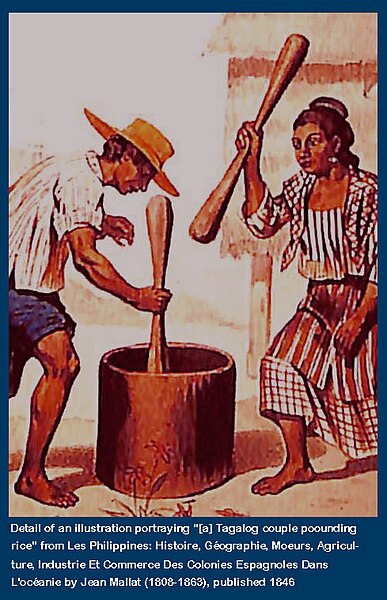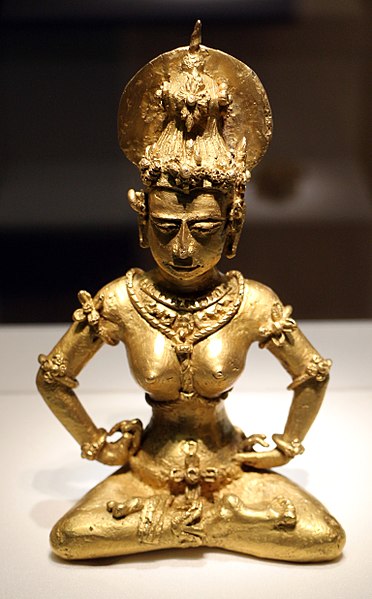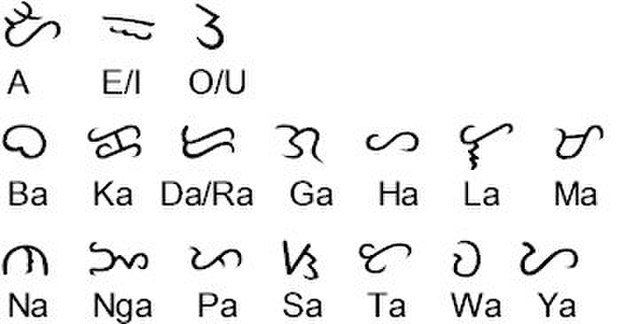Maynila (historical polity)
In Philippine history, the Tagalog bayan of Maynila was one of the most cosmopolitan of the early historic settlements on the Philippine archipelago. Fortified with a wooden palisade which was appropriate for the predominant battle tactics of its time, it lay on the southern part of the Pasig River delta, where the district of Intramuros in Manila currently stands, and across the river from the separately-led Tondo polity.
Detail of an illustration from Jean Mallat's 1846 book "The Philippines: history, geography, customs, agriculture, industry, and commerce of the Spanish colonies in Oceania", showing "a Tagalog couple pounding rice." The mortar depicted is known as a lusong, a large, cylindrical, deep-mouthed wooden mortal used to de-husk rice. Linguist Jean Paul Potet explains that the Old Tagalog name of the Pasig River delta, in which Tondo was located, was derived from this mortar.
History of the Philippines (900–1565)
The recorded history of the Philippines between 900 and 1565 begins with the creation of the Laguna Copperplate Inscription in 900 and ends with the beginning of Spanish colonization in 1565. The inscription records its date of creation in 822 Saka. The discovery of this document marks the end of the prehistory of the Philippines at 900 AD. During this historical time period, the Philippine archipelago was home to numerous kingdoms and sultanates and was a part of the Indosphere and Sinosphere.
The Agusan image statue (900–950 CE) discovered in 1917 on the banks of the Wawa River near Esperanza, Agusan del Sur, Mindanao in the Philippines.
The Baybayin script
Ferdinand Magellan




